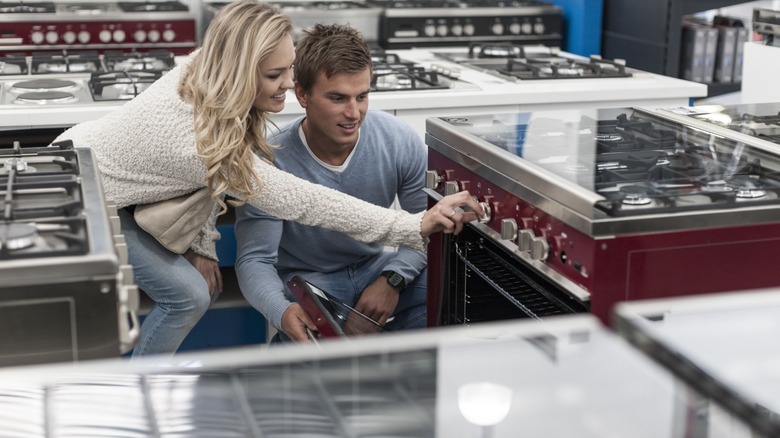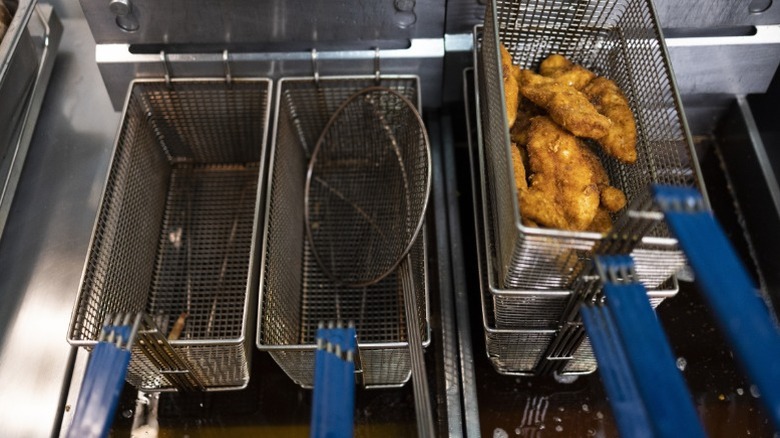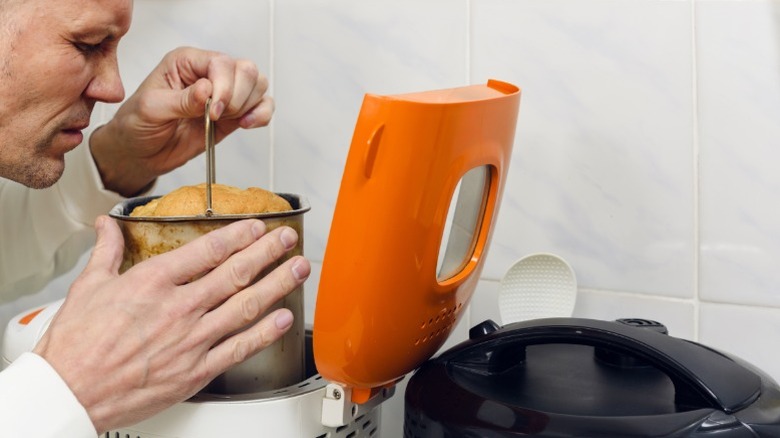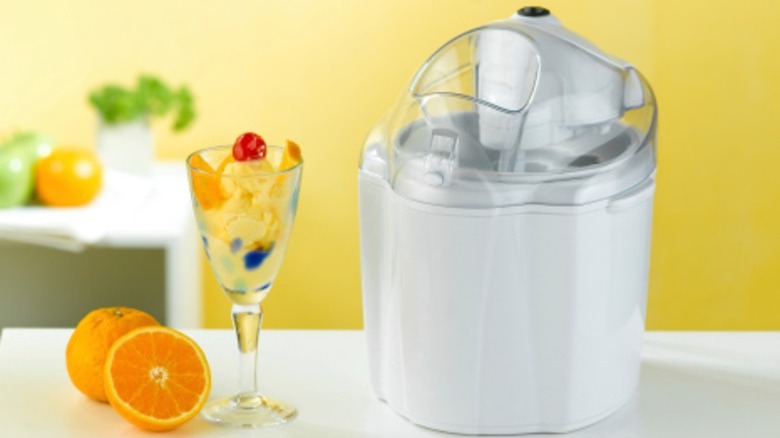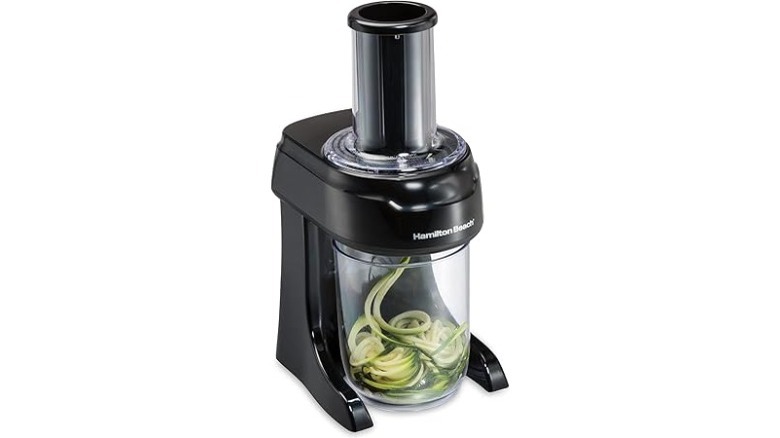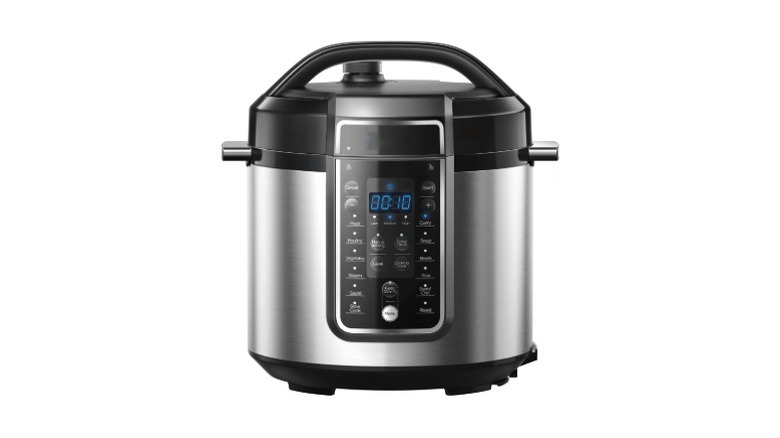5 Overrated Kitchen Appliances You'll Rarely Use As A Home Cook
We may receive a commission on purchases made from links.
Every other day, there's a new video on the internet telling you that you need a new appliance to help you out in the kitchen. People fall for these ads, buy the product, and then let it gather dust because it's single-use or simply irrelevant in their daily routines. The initial excitement wears off quickly, leaving many of these so-called "must-haves" tucked away in cabinets, barely seeing the light of day. In fact, a study from the University of Cambridge found that kitchen appliances are among the most frequently regretted purchases, with roughly four in 10 people buying gadgets they never really use.
That doesn't mean every new piece of kitchen gear is worthless, though. With most of these appliances, you only pull them out for a specific task, but ideally, you should look for appliances you'll get more use out of. So, before you start clearing kitchen space for your new arrival, here are five overrated appliances you'll rarely use.
Deep fryers
A deep fryer is sure to get you those crispy golden fries and fried chicken, but there are certain things you should consider before getting one. For one, hot oil needs careful handling and safe disposal. The USDA's Food Safety and Inspection Service has warned that the hot oil used in deep-fat frying can be very dangerous and may start fires if not handled with the proper precautions.
Cleaning the deep fryer can take up to an hour as well, and that demands extra effort, especially since you'll be tired from all the frying. Don't forget about the electricity costs attached to getting a deep fryer, either, because deep fryers consume a lot of power. Popular household models use around 1,500 watts or more.
Remember that deep-fried foods are full of high calories and trans fats (which can increase the risk of heart disease), so you should be careful about consuming too much. So, if safety, oil waste, and cleanup sound like dealbreakers to you, then getting regular takeout or using a frying pan might be a better option. Another highly recommended option is to get an air fryer like the Ninja AF101, since air frying is a healthier way to fry your food.
Bread machines
Truthfully, bread machines like the Cuisinart Convection Bread Maker are among those appliances worth your money because they make it easy to mix and proof dough automatically. That's probably why they were a hot item in the '90s. But while machine loaves produce more consistent results, they're not the go-to option if you need something that can bake any bread you want. For example, it's trickier to make complex breads like croissants and bagels with a bread machine. The loaves also come out with thinner crusts and sometimes have holes in them because of the kneading paddle.
For some bakers, mixing dough in a stand mixer (or even by hand) and finishing the loaf in the oven produces better crusts and more flexible loaf shapes. Because of this, home bakers tend to find machine-made bread underwhelming compared to oven-baked loaves. You might be thinking that they're a cheaper alternative to store-bought bread, too, but the truth is, you might not save that much by using a bread maker.
Specialty ice cream makers
Ice cream makers have grown popular in the United States recently because more people are trying to add health-conscious products (like dairy-free, vegan, or low-calorie ice creams) to their diet. The machines themselves have also become more effective, and some have simplified their process to reduce carbon emissions by up to 50%. But that doesn't mean you need to go all out for a machine that'll only make dessert a few times a year.
Ice cream machines can produce that sweet, custard-style ice cream you'd love, but you need to be very patient when using them. Popular pre-freeze models like the Ninja Creami require you to freeze a bowl first for 24 hours before you even start making the ice cream. This makes storage another problem since you'd need freezer space as well as storage space for when the machine is not in use.
It's also cheaper to buy store-bought ice cream than to make your own. There are many brands of ice cream available, with average prices as low as $6.37 per liter. On the other hand, your tub of homemade vanilla ice cream may cost as much as $11.74 per liter to make. Technically, you don't need to buy an ice cream maker to make great ice cream. Blenders, food processors, and even Thermomixes can still get you the same consistency and flavor as store-bought (and even ice-cream-maker-made) ice cream. You may just need to churn it a little more for smoothness, but you'd be saving a lot more money for your effort.
Electric spiralizers
Spiralizers are great for slicing vegetables into fun shapes like strands and spirals, which is a plus if you're trying to get your kids to eat more vegetables. The Brieftons 5-blade spiralizer in particular is great for those who have weekly meal plans that include lots of zucchini, sweet potatoes, or beets, and especially for those who need kitchen tools to help them hit their fitness goals.
If you're not buying an electric spiralizer for any of these reasons, then it's just one more single-purpose gadget to force into a crowded drawer. Cleaning them also takes patience and care because small bits usually get trapped between blades after use. Using a dishwasher to clean the appliance might dull the blades too, so it's best to clean by hand.
You might also need more storage, as some models can be bulky. Smaller models may also struggle to slice veggies that are too thin or not cylindrical enough, and not every vegetable can be spiralized. That's why it's best to use smaller, multi-use options like handheld peelers, julienne blades, or even a quality chef's knife if you want to spiralize without specialized equipment.
Electric pressure cookers
Pressure cookers like the Instant Pot Duo are convenient because they can easily cook various types of food. At the same time, that convenience shouldn't fool you, because there are downsides you should weigh before buying an electric multi-cooker.
For one, it often takes longer to reach the right pressure than with the stovetop version, so it's less predictable for cooking certain recipes. It also takes time to master the presets and learn which recipes actually work with the appliance. That's why many home cooks think it's worth buying used stovetop pressure cookers since they're cheaper and cover more recipes with less confusion.
You also need to take note of the safety procedures for using the cooker. If you force the lid open, you might put yourself in danger from the pressure and steam escaping suddenly. Try as much as possible to seal the pot properly and check that all parts are in good condition before use to avoid the risk of explosions. While the inner pot and lid of most models are safe enough to clean in your dishwasher, you'd still have to clean some of the inner parts by hand. Some models have specific cleaning guidelines as well, so you should take that into account if you're considering getting an electric pressure cooker.
